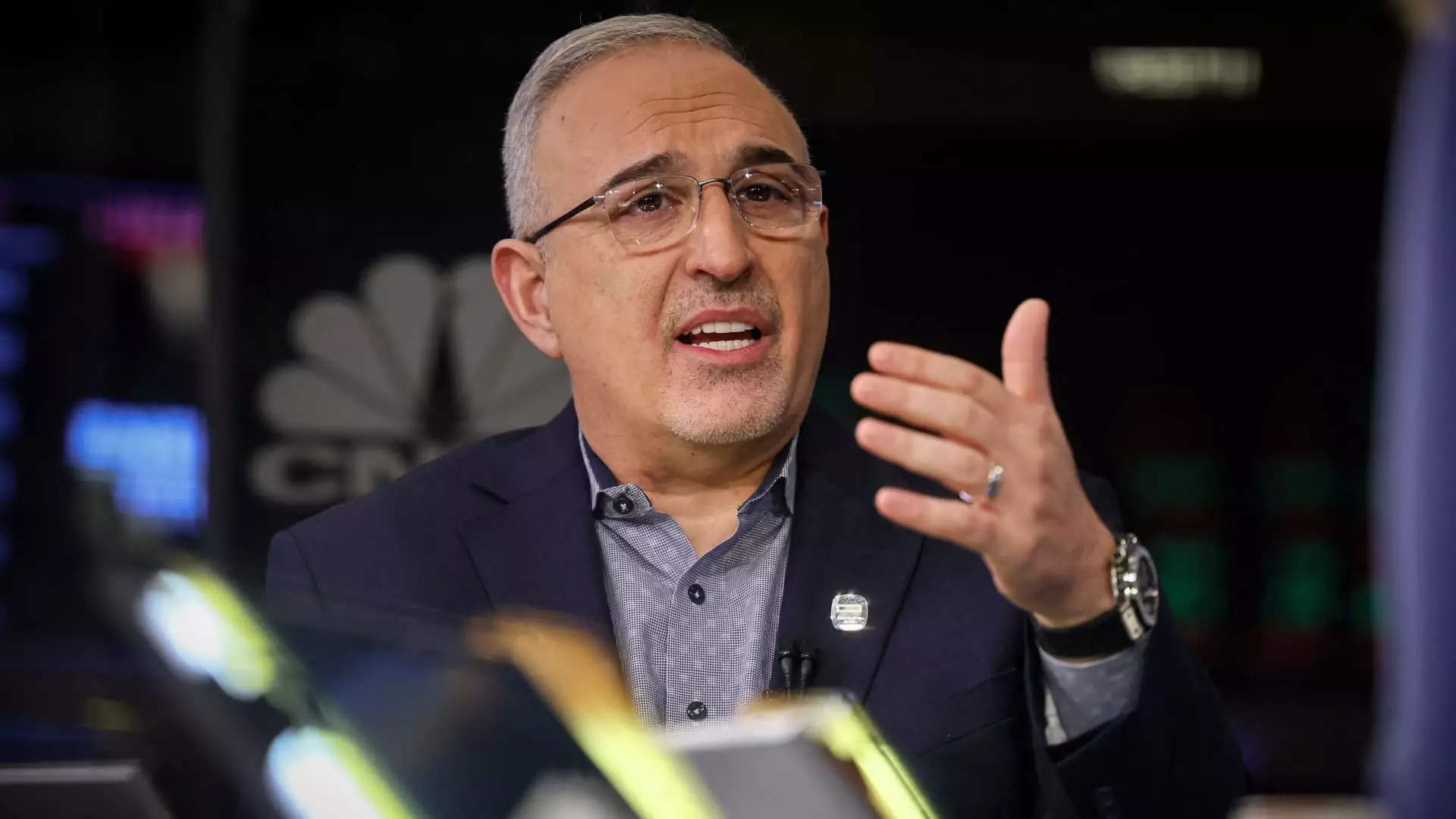Hewlett Packard Enterprise (HPE) has recently found itself at a troubling crossroads, as evidenced by its staggering 19% plummet in share price following the announcement of its disappointing quarterly earnings and full-year outlook. For a company that markets itself as a leader in data center equipment, these figures are more than mere numbers; they represent a significant disconnect between expectations and reality in a landscape marked by technological advancements and growing competition.
In the fiscal first quarter, HPE reported a solid revenue increase of 16%, with figures reaching $7.85 billion. While these numbers might seem promising at first glance, they belied deeper issues that can’t be overlooked. Earnings per share landed at an adjusted 49 cents, perfectly matching analysts’ predictions, but the broader guidance offered for the second quarter raised eyebrows. Expectations dropped to a range of 28 to 34 cents for the coming quarter—well below the anticipated 50 cents. The company projects revenue between $7.2 billion and $7.6 billion, a far cry from the expected $7.93 billion. Such discrepancies indicate not just a slip in execution but deeper, systemic vulnerabilities that threaten HPE’s market position.
The AI Conundrum
In the precarious world of artificial intelligence, HPE faces a daunting challenge. The company has reported a significant amount of inventory in AI servers, partially due to a transition to next-generation Blackwell GPUs from Nvidia. While the backlog of AI systems has grown by 29% quarter over quarter to $3.1 billion, it raises questions: is HPE genuinely positioned to lead in this rapidly evolving sector, or is it merely reacting to trends that it failed to anticipate? The financial tactics employed—extensive discounting of traditional servers—underscore a company scrambling to maintain relevance rather than developing a robust, forward-thinking business strategy.
The reality of HPE’s situation is further complicated by executive comments outlining a cost-cutting initiative. Over the next 18 months, around 2,500 employees are expected to be laid off, which amounts to roughly 5% of the workforce, in a move designed to save $350 million by the 2027 fiscal year. While cost-cutting can be necessary for survival, it often signals underlying issues: stagnation in innovation, loss of talent, and an inability to adapt to market demands. HPE might find that trimming the workforce could compound its challenges, pulling valuable insight and creativity from its ranks just as it desperately needs to pivot strategically.
Legal Hurdles and Market Dynamics
Though HPE’s accounting may present a façade of a healthy organization, the backdrop of legal tumult adds to the complexity. The ongoing scrutiny over its proposed acquisition of Juniper Networks by the U.S. Justice Department indicates that external forces are also at play, complicating HPE’s future. This attempt at a $14 billion acquisition, now under judicial review with a trial expected in July, speaks volumes about HPE’s positioning in a market that is increasingly wary of consolidation. Such legal battles are not just distractions; they can sap resources, divert attention, and stall innovation at a critical juncture.
Amidst a challenging environment, the reality remains that many businesses within the tech sector have adapted and thrived, casting doubt on HPE’s ability to do the same. As margins tighten and competition grows fiercer, the expectations for robust digital transformation initiatives on the part of HPE may appear far-fetched.
Looking Ahead
So what does the future hold for HPE? As they contend with increasing operational costs spurred by U.S. tariffs, the looming threat of global competition, and the pressing need for strategic innovation, optimism seems misplaced. While market sentiments may fluctuate, the underlying indicators suggest a company struggling against the tide rather than riding the waves of innovation.
In a world where adaptability and innovation are paramount, HPE’s stumbling approach leaves more questions than answers. With expectations turning increasingly pessimistic, investors and analysts alike may soon view HPE not merely as a struggling tech company, but as a cautionary tale of how rapidly changing landscapes can swiftly outpace even the most established entities.

